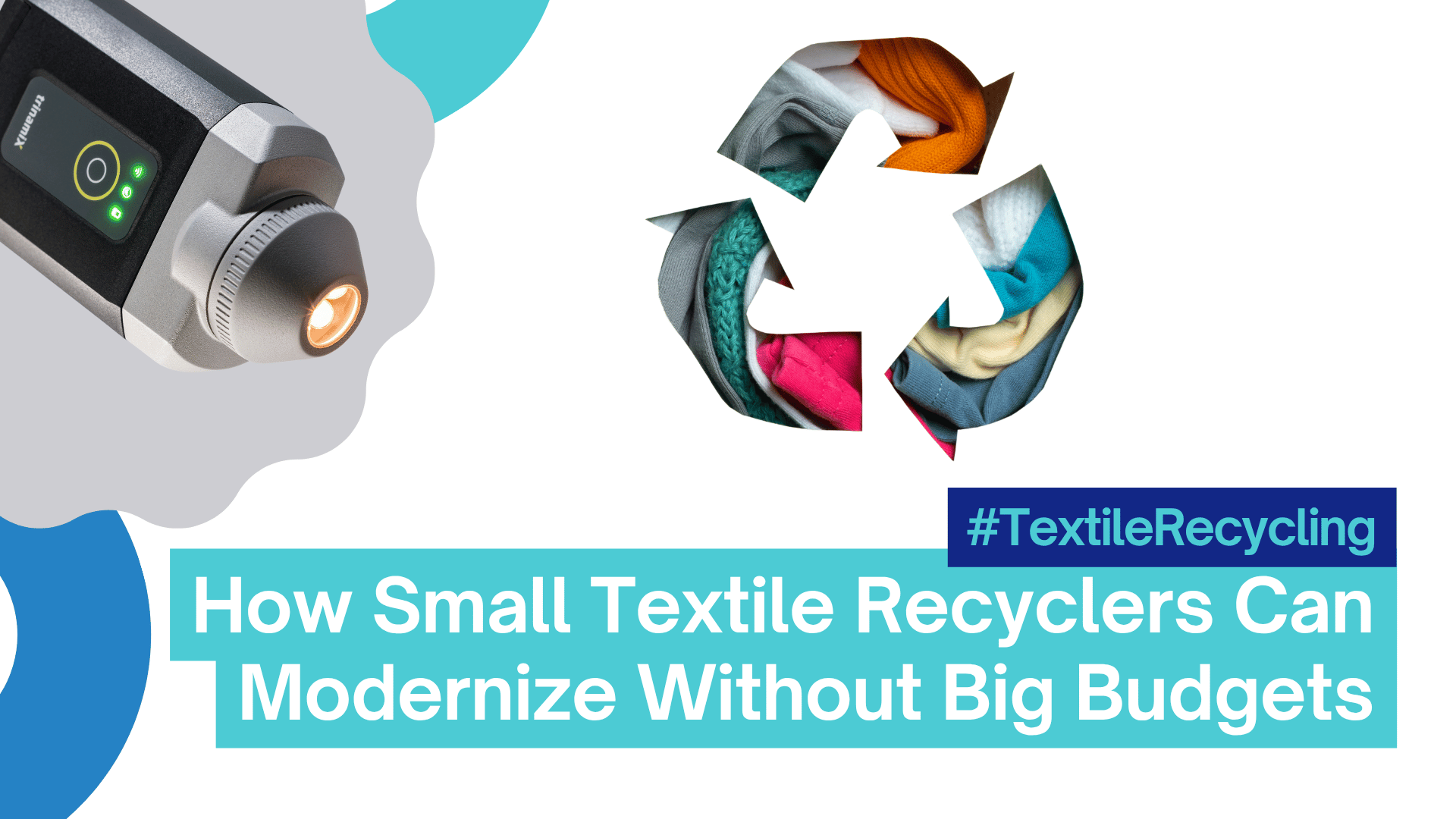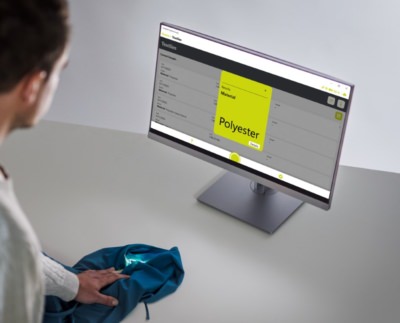Small textile recyclers face a tough challenge: growing pressure to sort accurately — while working with limited space, staff, and capital.
For many, investing in a full-blown automated sorting line just isn’t realistic. Yet manual sorting is slow, error-prone, and hard to scale.
So, what’s the alternative?
Let’s look at how smart recyclers are solving this with minimal equipment and zero labs.
Manual Sorting Works – Until It Doesn’t
In many smaller facilities, workers identify materials by hand and feel. An experienced sorter might distinguish cotton from polyester. But:
- What about viscose vs. polyester?
- What if the fabric is dyed, blended, or coated?
- And what happens when that experienced sorter retires?
Even small inconsistencies in sorting can drastically impact the value of your final output.
Lab Testing? Too Slow, Too Expensive
Some recyclers try to outsource testing to verify materials — especially for blends or nylon types. But that means:
- Long delays between collection and processing
- Extra costs per sample
- No real-time feedback at the sorting line
Enter NIR Scanning — No Lab, No Delay
Near-Infrared (NIR) spectroscopy has been used in industrial recycling for years. But until recently, it was large, expensive, and lab-based.
Now? That’s changed.
With mobile NIR scanners like the trinamiX PAL One, recyclers can:
- Scan textiles directly at the sorting station
- See instant, color-coded results
- Detect cotton, polyester, viscose, polyamide, wool, blends and more — with high accuracy
Start Small, Sort Smarter
One of the biggest advantages? You don’t need to commit to a large system.
Start with a handheld scanner and one application license (e.g., textile identification). Later, add upgrades like:
- Fast sorting mode
- Wool or Nylon 6/6.6 detection
- Table integration for semi-automated sorting
It’s an approach that matches your scale — and grows when you do.
Case Snapshot: A 3-Person Operation in Spain
One recycling startup near Valencia collects and processes used clothing. Their challenge: identifying mixed materials quickly, without trained staff.
They adopted a trinamiX scanner with the standard textile database and trained workers in under 30 minutes. Result: faster throughput, better bale quality, and fewer mistakes.
They’ve since added the dedicated wool detection app with colour-coded results for their winter wear stream — and are now exploring a sorting table setup.
Ready to Explore the Technology?
If you’re sorting textiles manually and want to modernize without going “all in” — this is worth a closer look.
👉 Explore the trinamiX textile scanner solution.
👉 Want to see how this approach looks in practice? Explore the solution here.
👉 Check out the trinamiX textile scanner available with 1-, 3-, or 5-year licenses.
About us – Solid Scanner
Let’s take responsibility and recycle more plastics, textiles, carpets, mattresses and more – ask us for suitable solutions. Our portfolio includes solutions ranging from small, portable solutions to individual solutions based on hyperspectral camera systems for simple, automated identification of plastics and in the sorting process and for inline process control, e.g. for homogeneity.
About trinamiX – the sensor technology company
Our technology partner trinamiX GmbH, based in Ludwigshafen, was founded in 2015 as a wholly owned subsidiary of BASF SE. As a start-up within the company, it is not only operationally independent, but also has unique access to the expertise and experience of the entire BASF Group. Its patent-pending technologies enable people and machines to capture the hidden and invisible world around them to make better decisions and increase safety.


